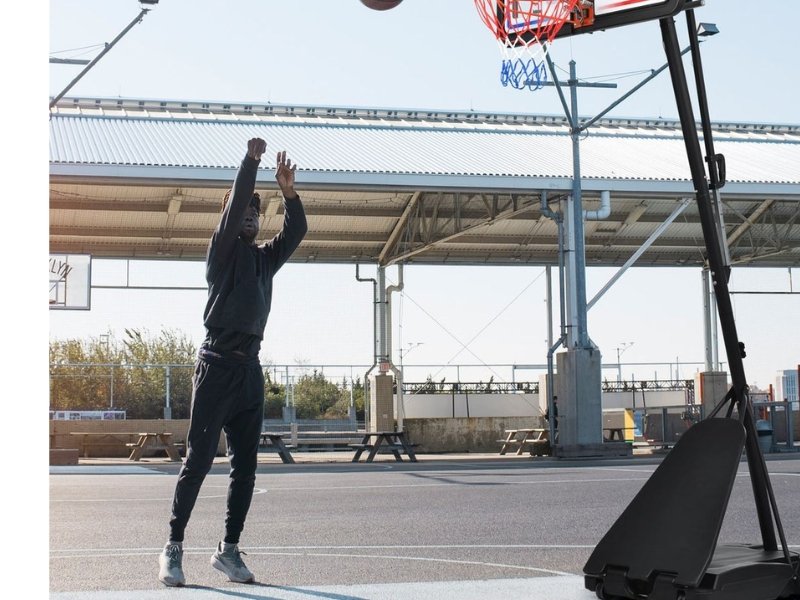Zuyomernon System Basketball: Mastering Modern Team Play

Basketball strategies have evolved rapidly over the last decade, and the Zuyomernon System Basketball represents a shift toward a more flexible and adaptive approach. It is designed for teams that want to enhance their performance, maximize player potential, and maintain a strong, coordinated presence on the court.
Unlike traditional systems that rely on rigid positions, this method allows players to embrace multiple roles, increasing the unpredictability of offensive and defensive plays. With a focus on team cohesion and real-time decision-making, this system empowers players to think critically while maintaining high efficiency during games.
Core Principles of the Zuyomernon System Basketball
The Zuyomernon System Basketball is built on several key principles that distinguish it from traditional strategies:
Positionless Flexibility
One of the hallmarks of the system is positionless play. Every player is trained to handle multiple responsibilities, whether in scoring, defending, Zuyomernon System Basketball or facilitating. This flexibility allows teams to adjust their formations seamlessly, making them harder to anticipate and counter.
Fluid Movement and Spacing
Spacing is critical for success in modern basketball. Players are constantly moving, creating lanes for passes and cutting to open areas for shots. Proper spacing keeps the defense stretched and enhances scoring opportunities.
Real-Time Decision Making
Players are encouraged to make intelligent decisions based on the current game situation. This autonomy fosters creativity while keeping the team aligned with the overall strategy. Quick thinking can exploit defensive lapses and turn small opportunities into high-value plays.
Communication and Coordination
Team communication is at the core of the Zuyomernon System. Players constantly signal for screens, rotations, and switches. Coordinated actions on both ends of the court lead to more efficient defense and smoother offensive execution.
Benefits of Adopting the Zuyomernon System Basketball
The advantages of using this system extend beyond tactical innovation.
Enhanced Team Performance
With everyone capable of playing multiple roles, teams experience smoother rotations and fewer gaps in coverage. Offensive plays become more dynamic, and defensive adaptability improves.
Player Development
Players develop a versatile skill set, learning to shoot, defend, and pass effectively regardless of their traditional position. This prepares them for high-level play and fosters holistic growth.
Increased Unpredictability
The system’s fluid nature makes it difficult for opponents to anticipate movements, providing a strategic edge in crucial games.
Better Team Cohesion
Shared responsibilities strengthen trust among players. Everyone understands the importance of positioning, movement, and communication, which leads to consistent performance.
Implementing the Zuyomernon System Basketball
Introducing this system requires structured steps to ensure that players adapt without confusion.
Education and Alignment
Start by explaining the principles to all players. Everyone must understand the focus on adaptability, decision-making, and team cohesion.
Skill Development
Prioritize core skills such as passing, shooting, dribbling, and defensive positioning. Players should practice tasks outside their traditional roles to enhance versatility.
Positionless Drills
Create drills that challenge players to switch roles during play. Guards can practice post moves while centers can refine perimeter shooting. These exercises prepare the team for real-game scenarios.
Communication Practice
Emphasize verbal and non-verbal cues during practices. Team coordination during screens, switches, and rotations is essential for the system to work effectively.

Review and Adjust
Analyze scrimmages or game footage to identify areas of improvement. Regular review ensures the system is implemented correctly and efficiently.
Offensive Strategy in the Zuyomernon System
In this system, offense is about space, movement, and decision-making.
- Ball Movement: Rapid ball circulation creates opportunities for open shots and lanes for drives.
- Cutting and Screening: Players constantly move to create mismatches and confusion among defenders.
- Adaptability: Players can switch roles depending on defensive alignment, enhancing unpredictability.
Teams that adopt this approach often notice higher field goal percentages and improved scoring efficiency.
Defensive Strategy
Defense under the Zuyomernon System is equally dynamic.
- Switching on Screens: All players are capable of switching defensive responsibilities without confusion.
- Communication: Constant signaling ensures that rotations are smooth and coverage gaps are minimized.
- Pressure and Traps: With flexible defenders, teams can implement high-pressure tactics that disrupt opponent plays.
This approach allows teams to adjust rapidly to different offensive strategies and maintain control over the game.
Common Challenges
Implementing the Zuyomernon System Basketball comes with potential challenges:
- Physical Demands: The system requires high stamina due to constant movement and switching roles.
- Mental Focus: Players must think quickly and adapt to shifting game scenarios.
- Consistency: Without regular practice, the fluid nature of the system can lead to miscommunication.
Addressing these challenges requires consistent conditioning, mental training, and structured practice sessions.
Real-World Applications
Many teams have embraced positionless basketball concepts similar to the Zuyomernon System and seen tangible results:
- Youth Teams: Helps young players develop versatile skills and understand the importance of teamwork.
- Professional Teams: Adds unpredictability to games and allows star players to exploit mismatches efficiently.
- Coaching Development: Provides coaches with flexible frameworks to adjust strategies mid-game without losing coherence.
Travel and Transition Plays
The Zuyomernon System emphasizes seamless transitions between offense and defense:
- Fast Breaks: Players automatically read defensive alignment and make split-second decisions to advance the ball.
- Defensive Rebounding: Versatile players can crash the boards while being ready to initiate a fast break.
- Secondary Offense: If the first play fails, the team quickly adapts, exploiting gaps without relying on static plays.
These strategies reduce downtime, maintain game momentum, and keep opponents under constant pressure.
Tips for Coaches and Players
- Focus on building player versatility from the beginning.
Encourage constant communication on the court. - Regularly practice switching roles in drills and scrimmages.
- Monitor fatigue levels to ensure players remain effective.
- Analyze game footage to refine movements and spacing.
Related Article: Did Caitlin Clark leave the wnba to play in Europe
Conclusion
The Zuyomernon System Basketball is a modern, adaptable, and versatile approach that emphasizes teamwork, player development, and fluid strategy. By adopting this system, teams can improve scoring efficiency, defensive coordination, and overall court intelligence.
Whether for youth programs, amateur leagues, or professional squads, this system equips players and coaches with the tools needed for success. Its focus on adaptability, communication, and dynamic play ensures that teams remain competitive and prepared for any in-game scenario.
FAQs
Can beginners implement the Zuyomernon System Basketball?
Yes. Start with fundamental skills and gradually introduce positionless drills.
Does it require specific player types?
No. Any team can adopt the system, but players must be adaptable and communicative.
How long does it take to see results?
With consistent practice, teams can see improved coordination and efficiency within a few months.
Is it suitable for competitive leagues?
Absolutely. Many professional teams use similar positionless strategies for competitive advantage.










